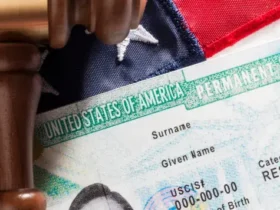I’ve always felt somewhat distant from my culture.
When I was a kid, something felt off. But, I couldn’t quite put my finger on it. “What even is my culture?” is a question that was always in the back of my mind. Growing up with Mexican and Spanish roots has always been uncomfortable to begin with.
Constantly surrounded by Mexican restaurants, going to school in the middle of Old Town San Diego (the oldest Spanish settlement in California) and seeing the hacienda-inspired buildings of Balboa Park meant that my culture was always physically visible. Even so, I didn’t notice its importance to my identity until truly moving away from my hometown.
San Diego’s culture is one that is incredibly rich and vibrant. There is nothing quite like it. The blend of Mexican and American cuisine exhibited in its fish tacos and carne asada fries (my personal favorite) is something you can’t find anywhere else. The celebration of Mexican-American culture can be seen in the neighborhood of Barrio Logan where people came together to build the famous Chicano Park to stop the I-5 freeway from splitting the community in half.
Yet the nearly 30-foot border wall — visible from many parts of San Diego and Tijuana — serves as a reminder of the political standoff between the United States and Mexico that makes up the culture of my hometown. It’s like a constant tension that you can always feel, even when it can’t be seen.
Although a fence between the two countries has existed for a while, it didn’t become a political battle until 2006, when President George W. Bush signed the Secure Fence Act into law. This allowed the construction of a border wall for 700 miles. Domestic United States tensions rose drastically, and Mexican politicians were not thrilled with the decision.
For instance, in 2006, the City of Laredo, Texas mayor Raul Salinas exclaimed, “These are people that are sustaining our economy by 40 percent. And I’m going to close the door on them and put a wall? You don’t do that. It’s like a slap in the face.”
This physical barrier tears people apart – literally and figuratively – causing pain for thousands of people that call border towns home.
When the border is treated like a military threat, and when politicians make this situation into an ‘us versus them’ scenario, people who live their everyday lives on the border are dehumanized. Growing up in a border town divided by a wall and political turmoil distorted my view of my identity.
In the present day, I am reminded of this strained relationship whenever polarizing events occur that emphasize the divide between San Diego and Tijuana. When the City of San Diego sheltered 500 unaccompanied migrant girls in the downtown convention center, it caused massive backlash from San Diego residents across the county and anti-Mexican sentiment peaked.
The border between San Diego and Tijuana is the busiest crossing in the world, with over 106 million individuals moving across it each year. It is normal for hundreds of thousands of people to cross it each day for school, work or even just to go shopping and grab a bite to eat.
As a result, when this new wall was built, it felt uncomfortable (and honestly a huge waste of money, costing the United States over $11 billion) to try and keep people out. As a political strategy, this wasn’t the best move either, considering the massive economic interdependence the two cities have on one another. They generate a GDP of $230 billion annually and even use the same power grid for all electricity.
Tijuana is also Mexico’s leading exporter and electronics manufacturer largely due to the city’s strategic location acting as the gateway between the Pacific and the Gulf of Mexico. The signing of the Trans-Pacific Partnership in 2015 meant that the number of exports from Asia to the United States and Mexico expanded significantly, with the majority of economic activity increasing at the border port of San Ysidro. The signing of the North American Free Trade Agreement, and later the United States-Mexico-Canada Agreement expanded the role of manufacturing in Tijuana and had the potential to stop some of the environmental concerns in the region.
This deal included $300 million to help with Tijuana sewage spills that have created toxic water in the south of San Diego for years. The effectiveness of this agreement, however, is currently under question, as just last February, millions of gallons of sewage contaminated San Diego once again. Although this sewage problem is ongoing, such crises show the intrinsic interconnectedness and the need for cooperation in addressing real solutions between the two cities.
Although the solution to these issues is rather complicated, separating our cultures and identities only furthers the problem. Placing a 30-foot slab of concrete between the two cities shows politicians’ fear, and it was an unsuccessful attempt to solve the issue with the only seemingly feasible solution. When a threat emerges, the United States needs to begin changing security policy to advocate for human rights and inclusion, rather than military intervention and closed doors.
There has been a multitude of binational agreements between the two cities in the past few years. In May 2022, the mayor of San Diego, Todd Gloria, and the mayor of Tijuana, Montserrat Caballero Ramírez, signed a memorandum agreeing to cooperate on improving many areas of the respective cities.
“We are an interconnected region that is stronger together, and agreements like this are a symbolic representation of our binational strength,” stated Mayor Gloria.
Compromises like these revive my hope that bilateral policy is headed toward the direction of unity rather than exclusion. With shared cultures, languages, foods and histories, it is clearly impossible to separate these two cities.
There are a lot more similarities than differences between the two cities. Celebrating my heritage as a multigenerational San Diegan is how I found love in my community on both sides of the border. Although the challenges are complex and healing may take a while, recognizing the inseparable bond the cities have in common is the first step toward change.







